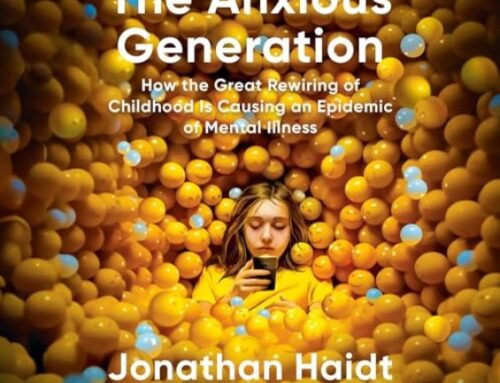 In 2002, Richard Florida published his book The Rise of the Creative Class and made a career for himself as an urban theorist, traveling the world lecturing and advising on how struggling, economically challenged cities could revive themselves. His “creative class” – a loose coalition that included artists, tech workers, academics and, interestingly, gay men and women – were rebuilding decimated downtown neighbourhoods and could do the same almost anywhere, provided cities were willing to attract them with the cafes, concert venues, art galleries, public transit, and other urban amenities they required.
In 2002, Richard Florida published his book The Rise of the Creative Class and made a career for himself as an urban theorist, traveling the world lecturing and advising on how struggling, economically challenged cities could revive themselves. His “creative class” – a loose coalition that included artists, tech workers, academics and, interestingly, gay men and women – were rebuilding decimated downtown neighbourhoods and could do the same almost anywhere, provided cities were willing to attract them with the cafes, concert venues, art galleries, public transit, and other urban amenities they required.
With his new book, The New Urban Crisis, Florida concedes that he might – just might – have overstated his case. The gaps between the rich and poor have increased, particularly in the case study cities that Florida described and, later, championed as an advocate of his pet theory. The so-called creative class has transformed cities, mostly by colonizing the most attractive districts, aggregating most of the wealth around them, and increasing house prices exponentially, driving the less fortunate classes – Florida’s “service class” and an equally distinct and diminishing working class – into insalubrious neighbourhoods, often at the city’s fringes.
The vagueness of what constituted the “creative class” no doubt helped sell Florida as an urban visionary – it could be stretched to include everyone from gallery owners, photographers, and art directors to claims adjusters, funeral directors, and tax collectors. In Florida’s theory, as one critic noted, “distinctive spatial and political proclivities are bunched together, purely on the basis of educational attainment, and with little demonstrable relationship to creativity.” Much of the good press was probably helped by the fact that journalists had pride of place in the creative class.
In his latest book, Florida bemoans how things haven’t turned out the way he imagined them 15 years ago, and presents a vision of cities where home prices have become wildly inflated, the suburbs have become increasingly poor and desperate places, and the middle class, as demographic entity, has ceased to exist.
The story of how urban rental and home prices have risen wildly is an old one. As a struggling post-collegiate writer and photographer in the ‘80s – the ragged vanguard of Florida’s creative class – I lived through at least one rental crisis in Toronto, where mostly unrenovated apartments in the urban core were virtually unattainable if you couldn’t provide landlords with post-dated cheques, a resume or record of employment, and technically illegal “key fees” or “viewing fees” that were actually bribes. What Florida presented as a wholly original vision – of cities being transformed in 2002, and as cities in crisis in 2017 – is a reality I’ve lived with the whole of my adult life.
I moved downtown because the working class suburb where I grew up was becoming a desperate place, with a main shopping street being decimated by the decline of employment in the local industries – chiefly Kodak – that had helped created the neighbourhood in the first place. Florida seems to think this is a recent development, but I witnessed its beginnings in the ‘70s, back when it might have been considered part of the “Old Urban Crisis” of inflation, deindustrialization, and “white flight.” (Ironically, house prices in my old neighbourhood have risen astronomically in the last few years, as that gold standard of real estate – the family home, detached or semidetached – has become valuable almost everywhere in the city, despite the construction of innumerable condo towers downtown. The supply of new condos increases almost daily, but people still seem to want to live in a place with a yard, however tiny, and front and back doors.)
Florida’s class taxonomy is the most curious thing about his creative class theory. His “service class” is distinct from the working class only inasmuch as one job exists to service the needs of creatives, from groceries (organic or otherwise) to coffee to childcare to paperwork processing – a demographic defined by Florida in one article as “rapidly growing industries like food service, clerical and office work, retail stores, hospitality, personal assistance, and the caring industries.” The working class, however, are occupied with manufacturing and construction – the sorts of industries that provided livings before the invention of a creative class. Or would if, in the case of manufacturing, they weren’t being sent offshore at a furious pace.
What’s confusing for me is that most young creatives work in the service class during that harrowing at the dawn of their careers that either sorts them into self-supporting creatives or maroons them in the service class for the rest of their lives. And since wages in the arts don’t grow along with those of IT workers or bureaucrats – the latter also apparently a thriving part of the creative class, judging by Florida’s map of Washington, DC – many of my nominally successful creative friends, now well into middle age, still support themselves with some mix of service or old school working class jobs.
There’s a sleight of hand at work with Florida’s theory, as the middle class that he bemoans as disappearing has actually been largely absorbed by him into the very elastic borders of the creative class, where vast armies of white collar workers find their home alongside tiny numbers of arts bureaucrats and musicians. His fetish for IT workers in particular seems curious, since many of the jobs being done in vast, architecturally praised tech campuses are, in basic function indistinguishable from the sort of grinding desk labour done on vast office floors in skyscrapers by men in gray flannel suits, 60 years ago.
Florida might be right that there is a crisis of wealth and opportunity happening in our cities right now. The big problem with his solutions is that he counterintuitively calls for us to solve problems created by urbanism with more urbanism, and airily imagines that we can avert human disaster in the megacities growing all over the third world with calls to “lead a global effort to build prosperous cities” and “empower cities and communities.”
The major flaw with his theory, however, is that he insists on describing things like suburbs or jobs or amenities with a particular lens, rendering it utterly unrecognizable to the people for whom sharing some common understanding is crucial. Florida’s apparently unsuccessful idea of a creative class revolution is just one more example of the division that seems to be pulling us apart socially by turning language into code more than communication; we are using the same words, but we are not talking about the same things. This is what inspired Brexit, Rob Ford, and Donald Trump, three recent developments that apparently baffled Florida and his colleagues, if you believe his new book, and baffled them with clear signs that a growing part of the citizenry doesn’t share their conventional wisdom, and has become wholly unable to trust “experts.”





